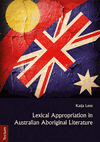Zusammenfassung
Today, virtually all Aboriginal people in Australia use English in their daily interactions. This is not surprising: in a situation in which many Aboriginal languages are lost beyond retrieval, English, as the official language of education, administration, law, and generally the language of the Australian mainstream society, has become the major medium of communication for the Australian Aboriginal community. Still, Aboriginal English, the variety most commonly spoken by Aboriginal people, often differs in many aspects from what is the accepted linguistic standard in Australia. Adapted to their communicative needs, it allows its speakers to express values, beliefs, and attitudes which are strongly influenced by their socio-cultural background.
Katja Lenz investigates how the lexico-semantics of Aboriginal English provide the means needed to express concepts not shared with speakers of Australian English. Approaching these questions from both the angle of Cultural Linguistics and that of Post-colonial Studies, she further shows how these tools are employed by Australian Aboriginal playwrights, who exploit the lexical resources of AborE for the linguistic construction and assertion of their own and their characters’ Aboriginality.
Abstract
Today, virtually all Aboriginal people in Australia use English in their daily interactions. This is not surprising: in a situation in which many Aboriginal languages are lost beyond retrieval, English, as the official language of education, administration, law, and generally the language of the Australian mainstream society, has become the major medium of communication for the Australian Aboriginal community. Still, Aboriginal English, the variety most commonly spoken by Aboriginal people, often differs in many aspects from what is the accepted linguistic standard in Australia. Adapted to their communicative needs, it allows its speakers to express values, beliefs, and attitudes which are strongly influenced by their socio-cultural background.
Katja Lenz investigates how the lexico-semantics of Aboriginal English provide the means needed to express concepts not shared with speakers of Australian English. Approaching these questions from both the angle of Cultural Linguistics and that of Post-colonial Studies, she further shows how these tools are employed by Australian Aboriginal playwrights, who exploit the lexical resources of AborE for the linguistic construction and assertion of their own and their characters’ Aboriginality.
- Kapitel Ausklappen | EinklappenSeiten
- 13–18 1 Introduction 13–18
- 83–132 6 Aboriginal English 83–132
- 381–392 12 Zusammenfassung 381–392
- 393–424 Bibliography 393–424

